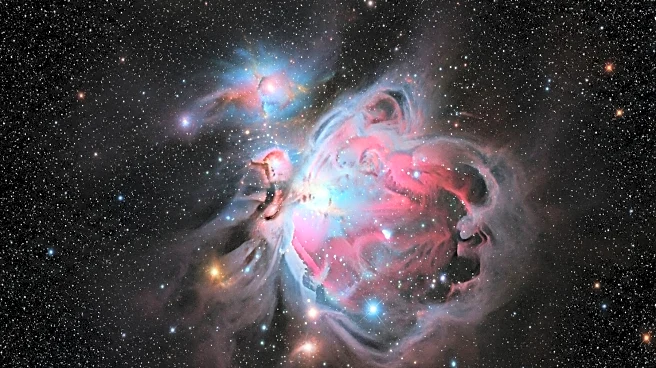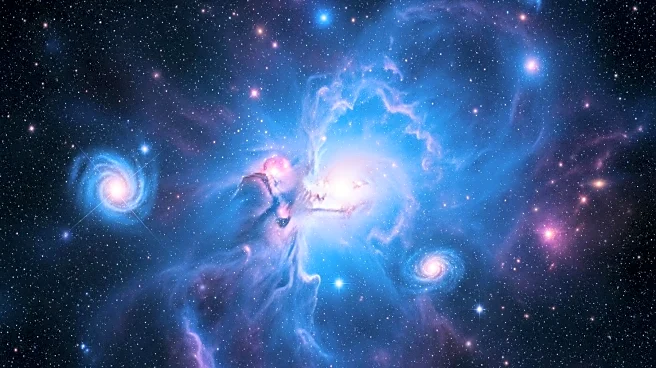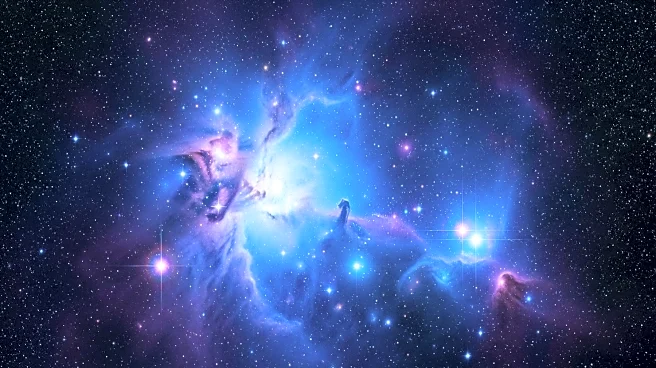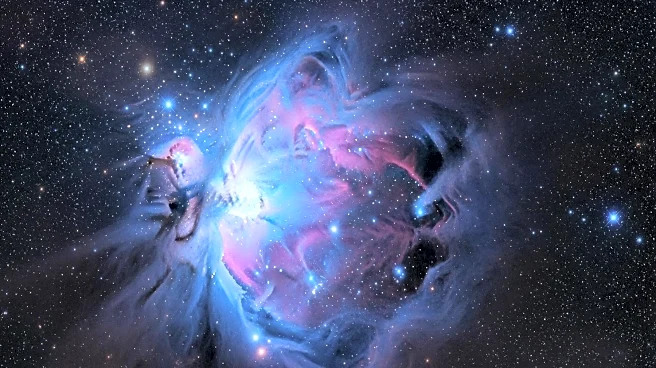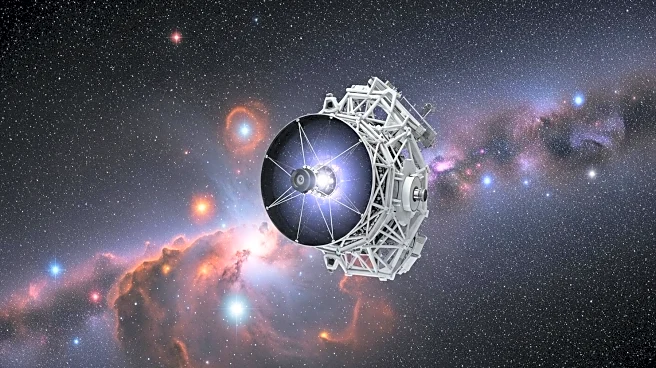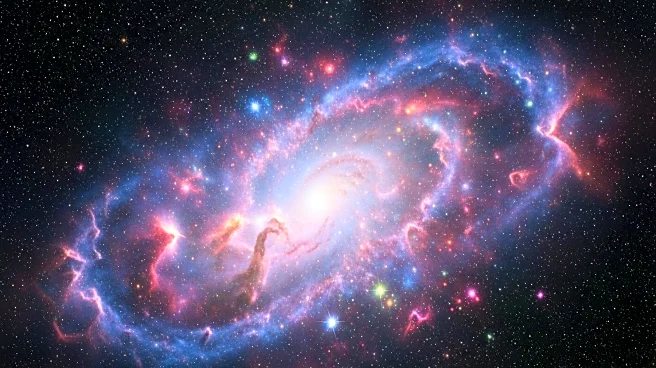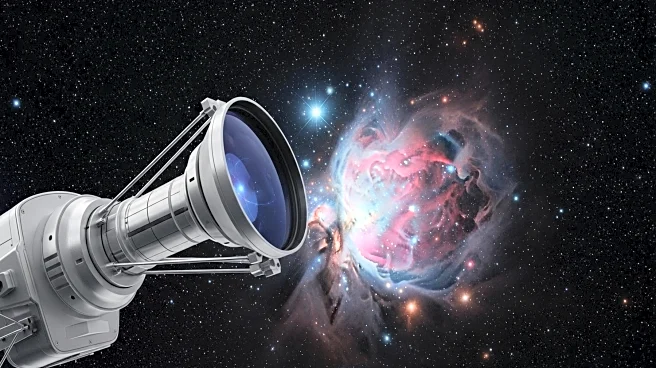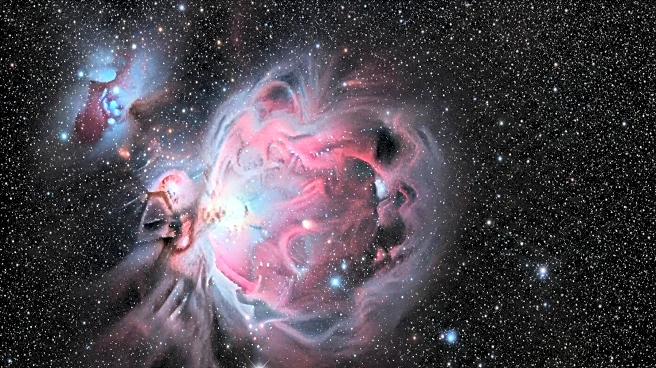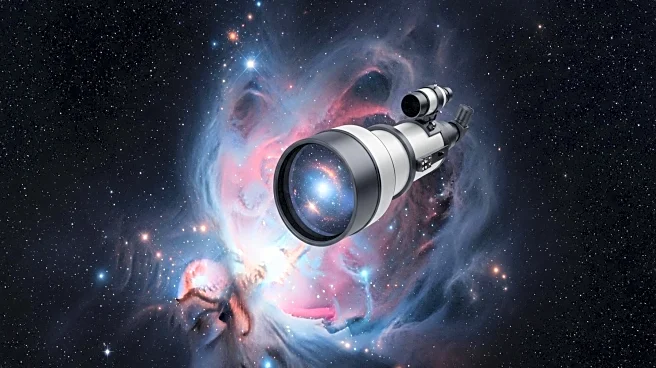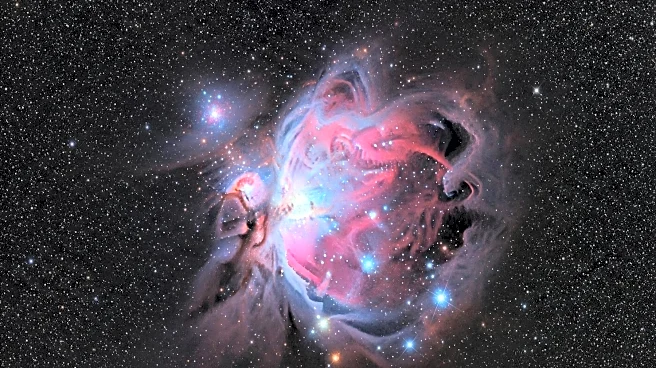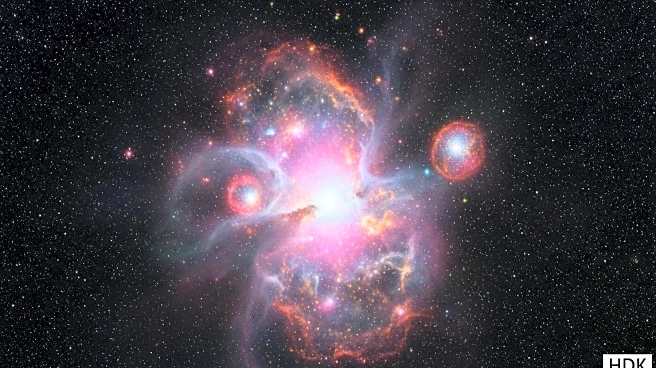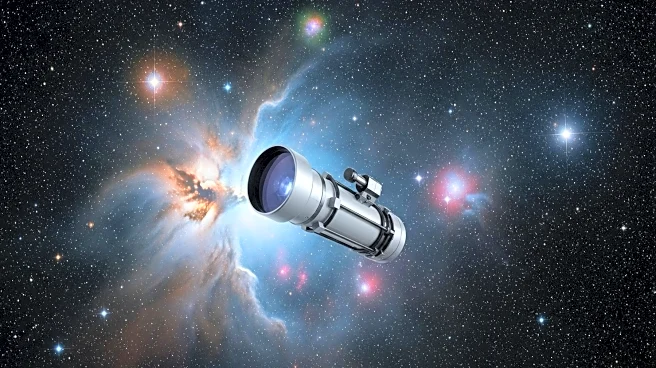What is the story about?
What's Happening?
NASA's James Webb Space Telescope has provided unprecedented infrared views of the Sagittarius B2 molecular cloud near the Milky Way's center. Despite the presence of numerous stellar nurseries, the region exhibits inefficient star formation. The telescope's observations have illuminated the processes that have shaped the Milky Way over eons, offering new insights into the dynamics of star formation in dense environments.
Why It's Important?
The findings from the James Webb Space Telescope are significant as they challenge existing theories about star formation efficiency in dense molecular clouds. Understanding the factors that inhibit star formation in regions like Sagittarius B2 can provide valuable insights into the evolution of galaxies and the conditions necessary for star formation. This knowledge is crucial for astronomers and astrophysicists as they seek to unravel the mysteries of galactic evolution and the formation of stars.
What's Next?
Future observations by the James Webb Space Telescope and other instruments may continue to explore the dynamics of star formation in Sagittarius B2 and similar regions. These studies could lead to refined models of star formation and help predict star formation rates in various galactic environments. Collaborations between NASA, ESA, and other space agencies will likely leverage Webb's data for simulations and further research.
Beyond the Headlines
The discovery of inefficient star formation in Sagittarius B2 highlights the complex interplay of magnetic fields, gas flows, and proximity to the supermassive black hole Sagittarius A*. These factors may disrupt the gravitational collapse needed for star formation, offering a natural laboratory for studying galactic maturation over billions of years.
AI Generated Content
Do you find this article useful?


